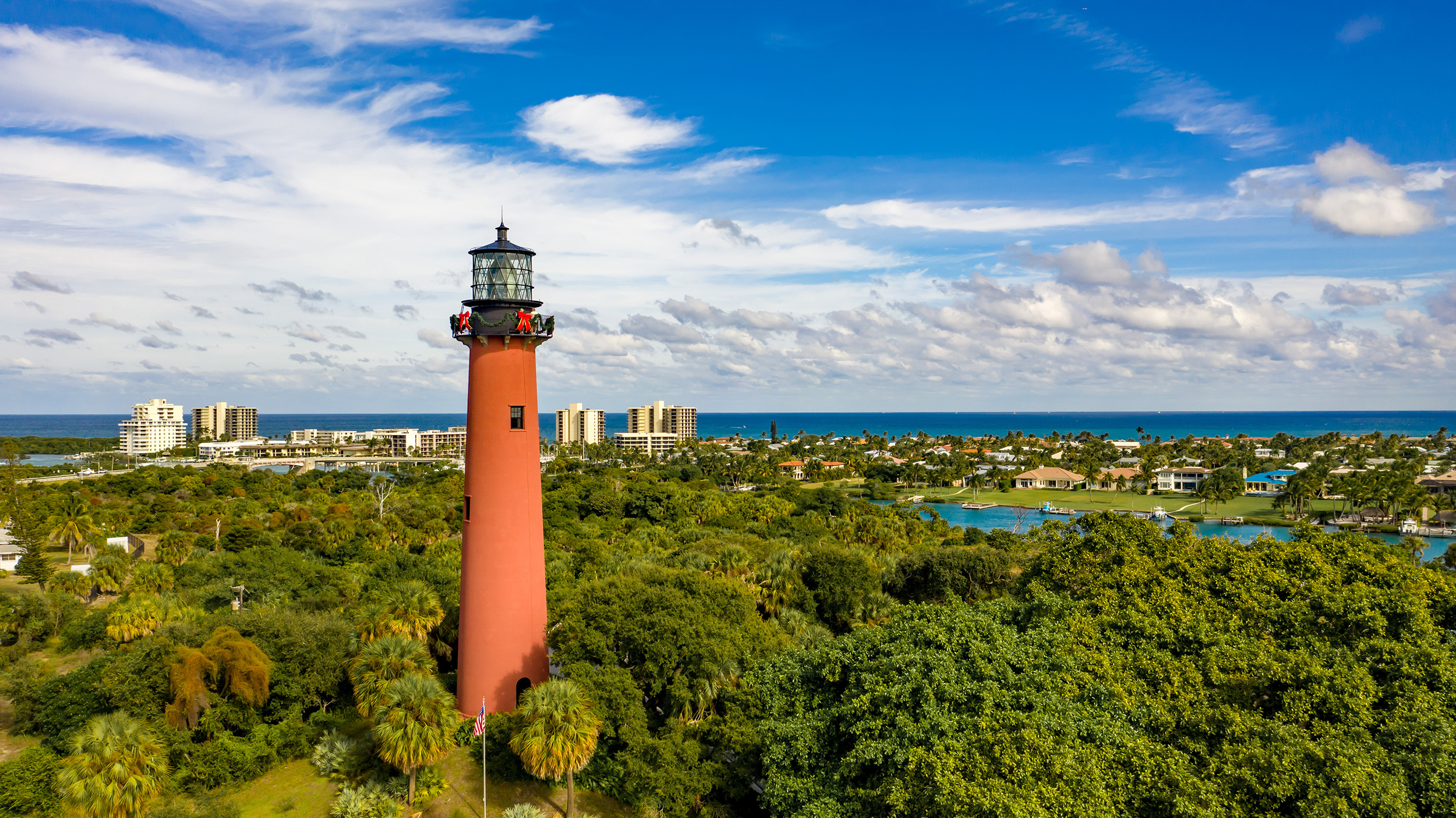The Jupiter Inlet Lighthouse is an iconic landmark located in Jupiter, Florida, on the northern tip of the Loxahatchee River and Jupiter Inlet. The site for the lighthouse was carefully chosen in 1853 and it’s situated between the Hillsboro Inlet Lighthouse and the Cape Canaveral Lighthouse.

The lighthouse design was created by Lieutenant George G. Meade of the Bureau of Topographical Engineers and was later modified by Lieutenant William Reynolds. Due to the silting of the Jupiter Inlet in 1854, all building supplies were shipped through the Indian River, causing construction to be delayed during the Third Seminole War between 1856-1858.
With the supervision of Captain Edward A. Yorke, the lighthouse was finally completed in 1860 at a cost of over $60,000. The lighthouse was built to aid ships navigating the treacherous waters of the Jupiter Inlet, which connects the Atlantic Ocean to the Intracoastal Waterway.
The lighthouse is situated on the northern tip of Jupiter Island, surrounded by a beautiful natural preserve that offers hiking trails and scenic vistas. The lighthouse tower stands at 105 feet tall and is painted in its original red and white stripes.
The lighthouse is still an active aid to navigation and the light can be seen for miles. The lighthouse also features a museum that displays artifacts, photographs, and interpretive exhibits that tell the story of the lighthouse and the surrounding area. Visitors can also climb the lighthouse tower for a panoramic view of the surrounding area, including the Intracoastal Waterway, the Atlantic Ocean, and the Jupiter Inlet.
The Jupiter Inlet Lighthouse and its associated buildings, including the lighthouse keeper’s quarters, are also part of the Loxahatchee River Historical Society and Museum, a non-profit organization that works to preserve the history of Jupiter and the Loxahatchee River.
In addition to the lighthouse and the museum, the lighthouse grounds also features a gift shop and an outdoor picnic area. It’s a great spot for a family outing, the lighthouse is open to the public daily, and it’s a popular destination among visitors and locals alike.
Homes With A View
Residents of the Jupiter Inlet Colony neighborhood, located just east of the lighthouse, are treated to spectacular views of the lighthouse and breathtaking sunsets to the west. Many of the homes in this community are situated to offer a perfect vantage point of the iconic lighthouse.

 My name is David Rogers, and I’m a licensed realtor who loves to provide high-level service. Please let me know how I can serve you!
My name is David Rogers, and I’m a licensed realtor who loves to provide high-level service. Please let me know how I can serve you!